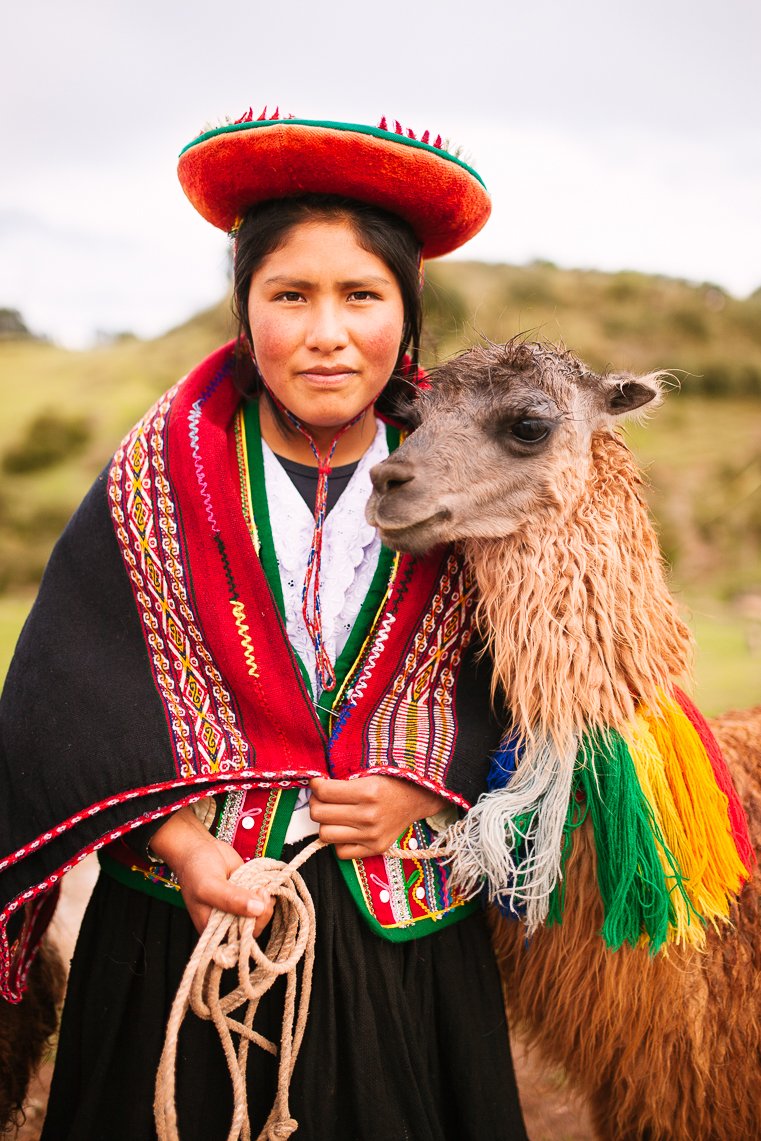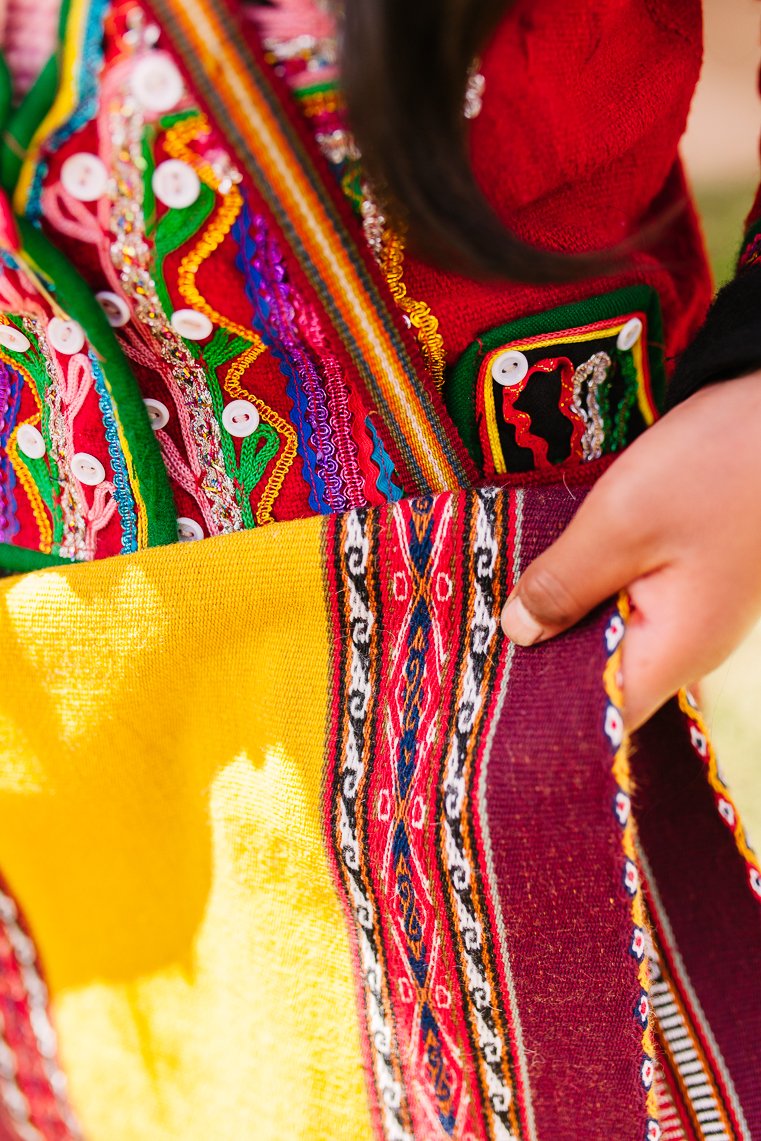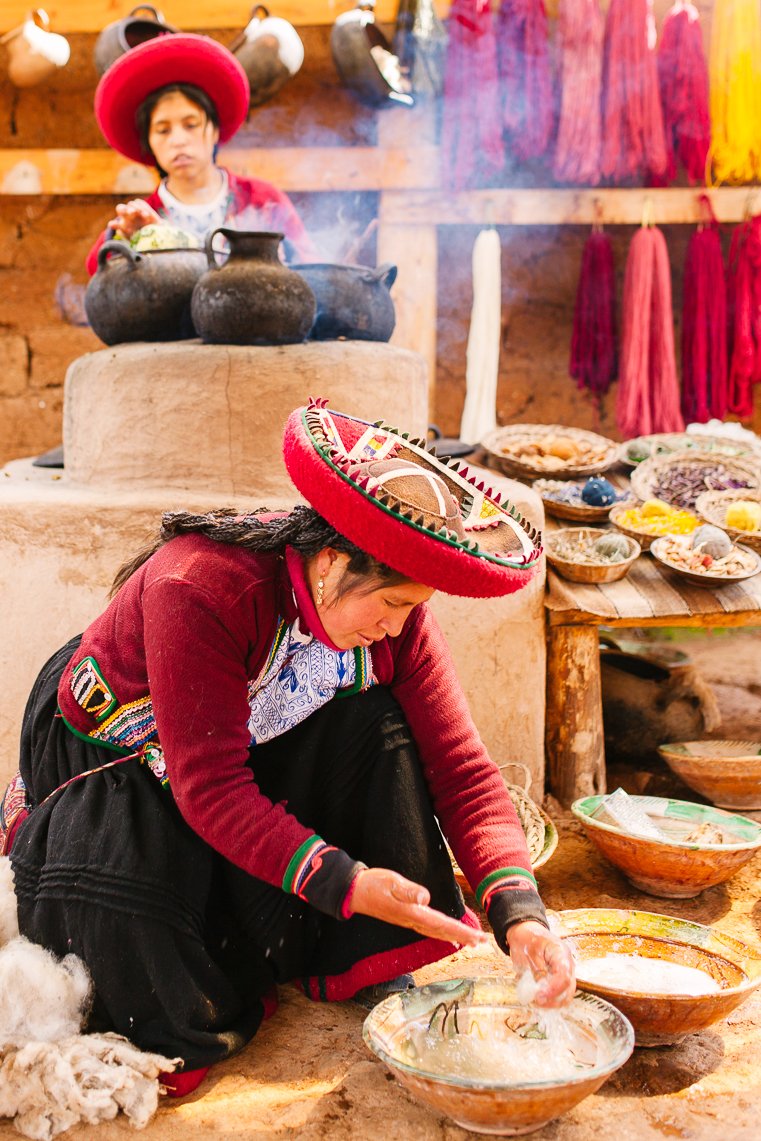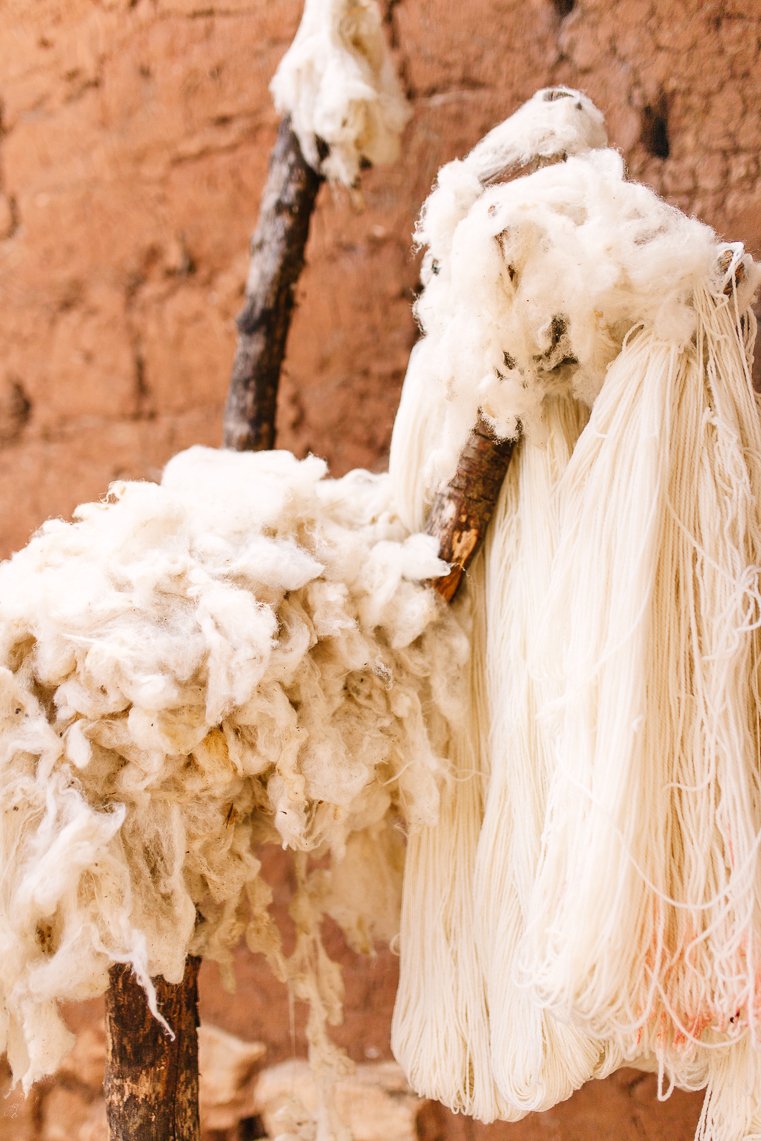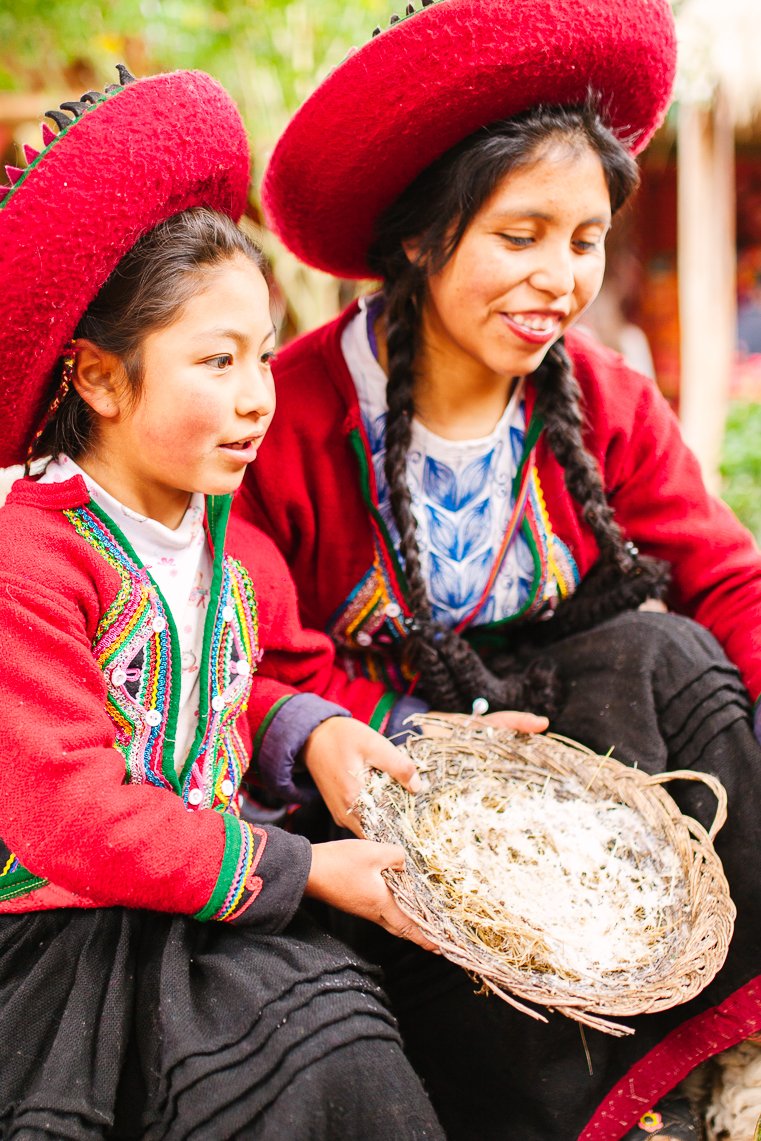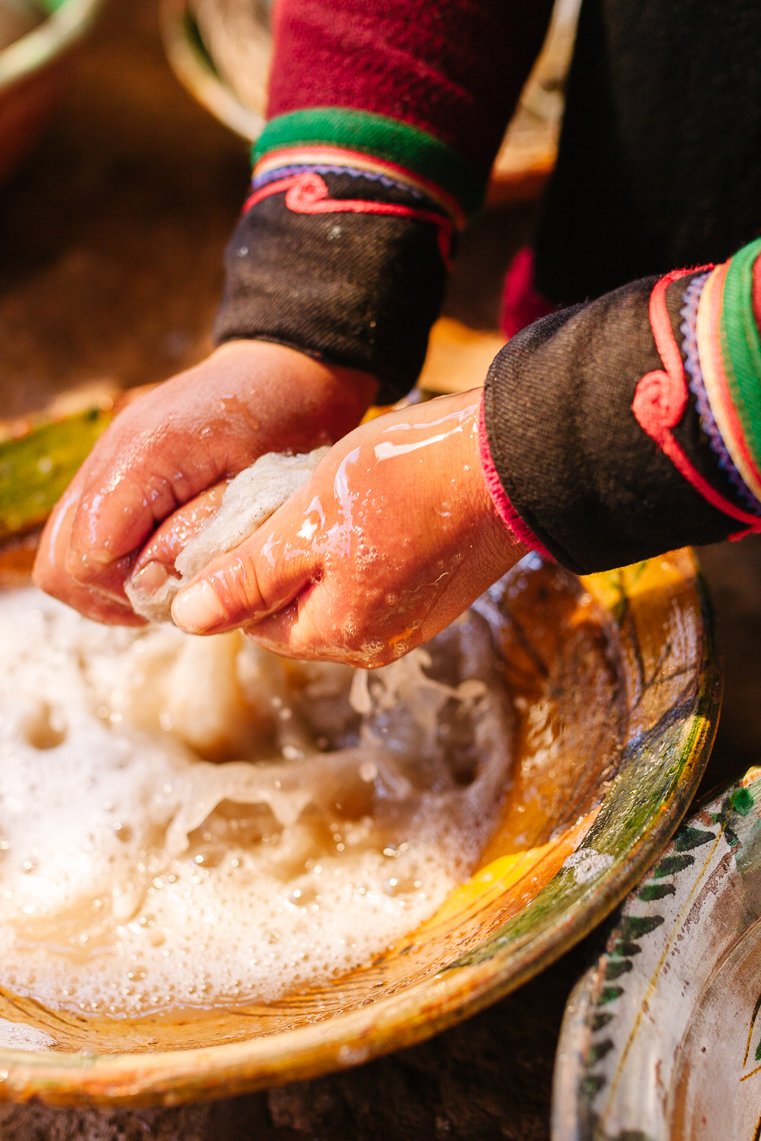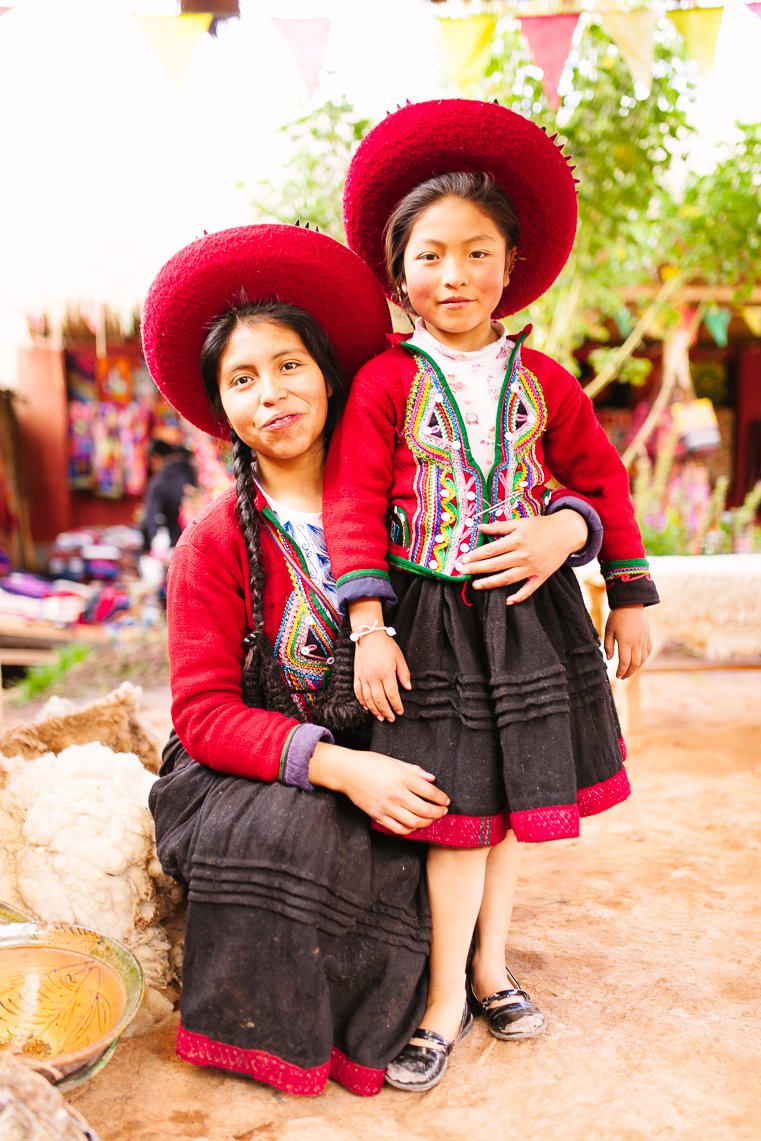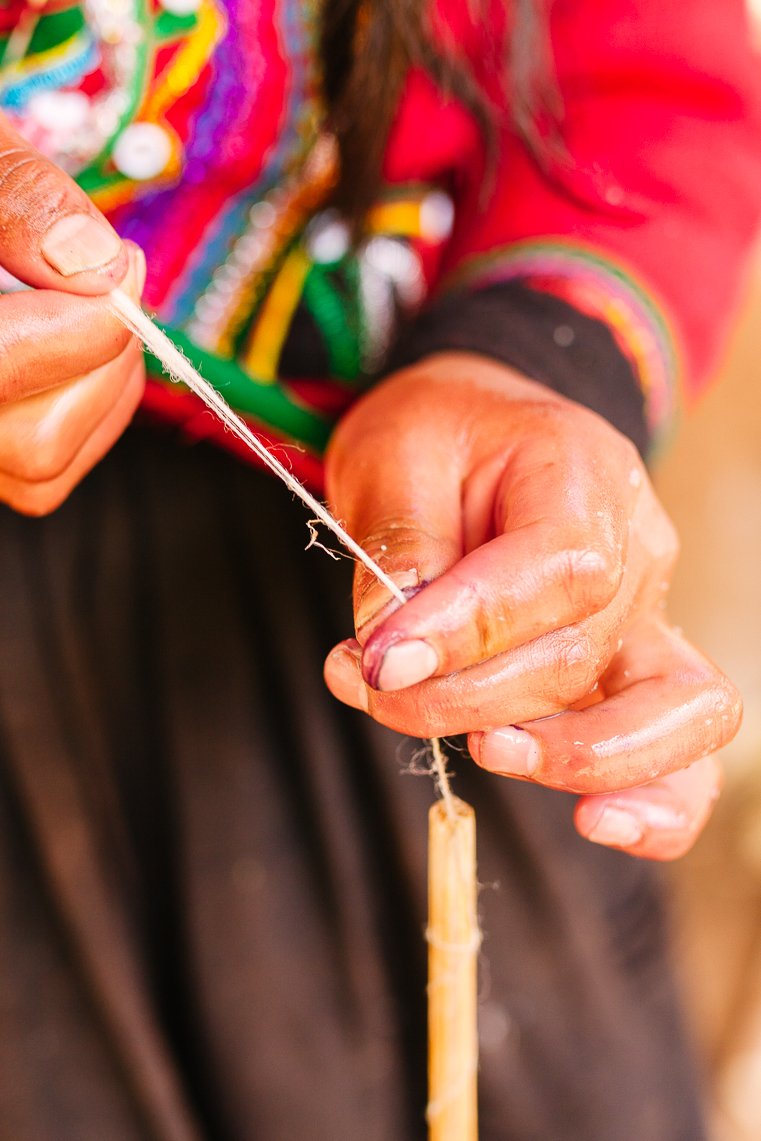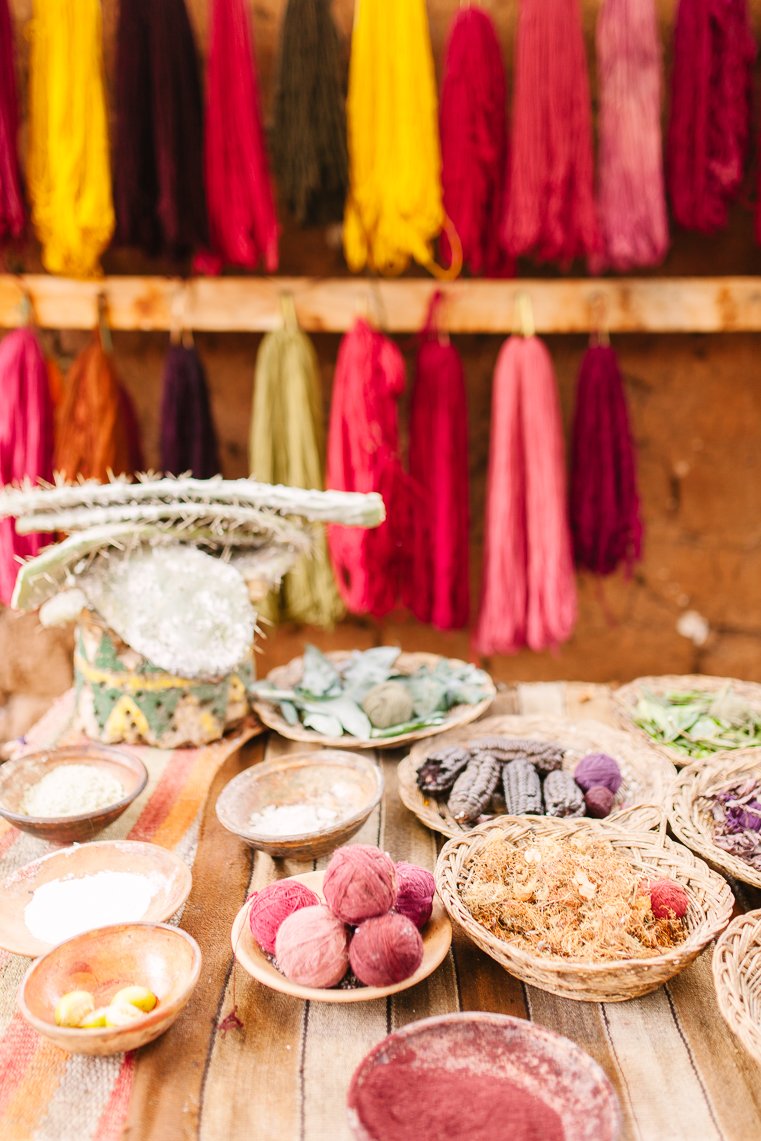Weavers of the Sky
Weavers of the Sky
Images & Words by Marta Tucci
Traditional handwoven fabrics embody the living history and heritage of the Peruvian highlands. Intricate textile patterns with expressive names such as Mayu Qenqo (meandering river) or Pumac Makin (puma footprints) tell tales of the geography and events of the Andean region and its history over thousands of years.
“Weaving is part of how we communicate our history to younger generations and the rest of the world,” Rosemary tells me, as she runs her fingers through alpaca thread in her home. Her fervour is palpable, as she explains how skilled weavers have passed ancient knowledge from old to young, generation after generation.
For years, hand-woven fabrics have embodied the living history and culture of the Peruvian Highlands. Textile patterns with expressive names like Mayu Qenqo (Meandering River) or Pumac Makin (Puma Footprints) tell tales of the events in the Andean region, as well as its diverse and chaotic landscape and sacred history spanning thousands of years.
As I made my way through the thundering mountains that so gracefully embrace the Sacred Valley, I listened with fascination to the ancient — yet living — stories about Quechua customs that my driver Elvis was reciting. He proudly told me the history of his land and the people who have inhabited it since pre-Columbine times. The ambition and scale of his tales matched any Western classic, despite never being written down.
“Manco Capac was the first and greatest of all the Inca — son of Inti, the Sun, who brought him up from the depths of the Lake Titikaka to rule from the great city of Cusco, the navel of the Earth.”
We take an unexpected left turn off of the main road, and start to approach Piuray Lagoon, as Elvis continues with his story. “Manco Capac had two children, a girl and a boy. Then one day Inti asked Manco Capac to go and find his children so that they could spend the sunset together. Yet when he went looking for them, he found in their place two lagoons; the Huaypo Lagoon (his son) and the Piuray Lagoon (his daughter).”
“These two lagoons,” explains Elvis, announcing our arrival, “represent the duality and balance of the sexes in modern day Quechua culture.”
In 1528 the Spanish colonisation of the Inca Empire destroyed and eradicated all written records of Incan culture, which was the only palpable account of Quechua customs and folklore. Now, the only original testament is found between the threads of intricate textile designs handwoven by indigenous communities of the Puna (Andean highlands).
Right up until the present day, Quechuan communities from the Peruvian highlands have been the keepers of tradition and the sustainers of an ancient yet arduous way of life. They work in absolute harmony with the Peruvian mother earth, whom they call Pachamama. Their unique weaving practices and patterns date back to pre-Columbian civilisations, and continue to be a great symbol of Quechuan cultural identity.
Reaching a small village near Piuray, we meet Mariana, a young girl with innocent features wearing a traditional montera (hat) and iliclla (black shoulder cloth) paired with a colourful vest and skirt. Walking beside her llama, Mariana explains how the women of Chinchero proudly wear their hand woven textiles and clothing on a daily basis, to differentiate the identity of their community from others in the highlands.
The region of Chinchero, at 3,780 meters above sea level in the province of Urubamba, is home to several Quechua communities. The men farm the land and harvest potatoes, barley, and quinoa to feed their families and sell at nearby markets, while the women raise llamas and alpacas to obtain textile fibres to weave. Alpaca and llama threads are lanolin-free, making them soft and insulating, regardless of the climate.
Women like Mariana spin on simple drop spindles and weave their colourful yarn on traditional back-strap looms while tending to their flock of alpacas or letting their family’s food cook over a fire, just as their forebears did before them for centuries. “I started playing with wool and spindles when I was very young. Then, around the time I was six years old, my older sisters started teaching me simple weaving techniques and patterns through observation and repetition,” explains Mariana.
Chinchero has traditionally relied on farming for financial sustainability, yet in the recent years, demographic and social changes have forced these small communities to find new ways to sustain themselves. Competition with large agricultural corporations means that local farmers can no longer rely on farming to financially support their families. Indigenous women who used to weave just to serve their family have now had to increase their production and sell textiles in local markets.
“They want to change Chinchero,” explains Concepcion, a weaver and mother of two. “The government has seized some land to make an international airport and to build big hotels that cater to the growing tourism that is overwhelming the city of Cusco [50km away from the village of Piuray]. This is changing everything for our communities, forcing us to give up our ancient way of life, which will soon be unsustainable in competition with the growing demands of tourism.”
The women of the Chinchero region are regarded as the keepers of tradition and the cultural identity of their community. Concepcion’s daughter Felicia, at the tender age of 7, is already learning the elaborate process of weaving through her mother and the women in her family.
By the 1970s, as a result of the exponential growth of tourism in the Sacred Valley, mainly due to the popularity of Machu Picchu, many Quechua weavers started to change their production. They began using artificial aniline dyes instead of natural ones and making simple patterns on more homogenised non-traditional fabrics to keep up with the increasing demand from tourism. These new textile designs no longer reflect the ancient weaving traditions of the communities, and their culture and identity are now sadly at risk of being lost and forgotten.
The balance between financial sustainability, quality of life, and sustaining the heritage of the Quechua people is a delicate one. Back in Rosemary’s home, she explains, “It is not only a cultural art form, but an integral part of our social organisation and economic situation.” She goes quiet for a while, before returning to the fibres on a drop spindle.
Today, although few in number, there still exist communities that remain largely unchanged in the face of globalisation. In a visit to some of the less transited areas of the highlands, I discovered villages that are winning the battle to preserve their customs, despite the increasing difficulties they face. They hold firm against the alluring tide of modernity, passing down knowledge from older to younger generations, from mother to daughter.
It is my hope that they will continue do so, whilst also benefitting from better access to healthcare and education, for many years to come.


